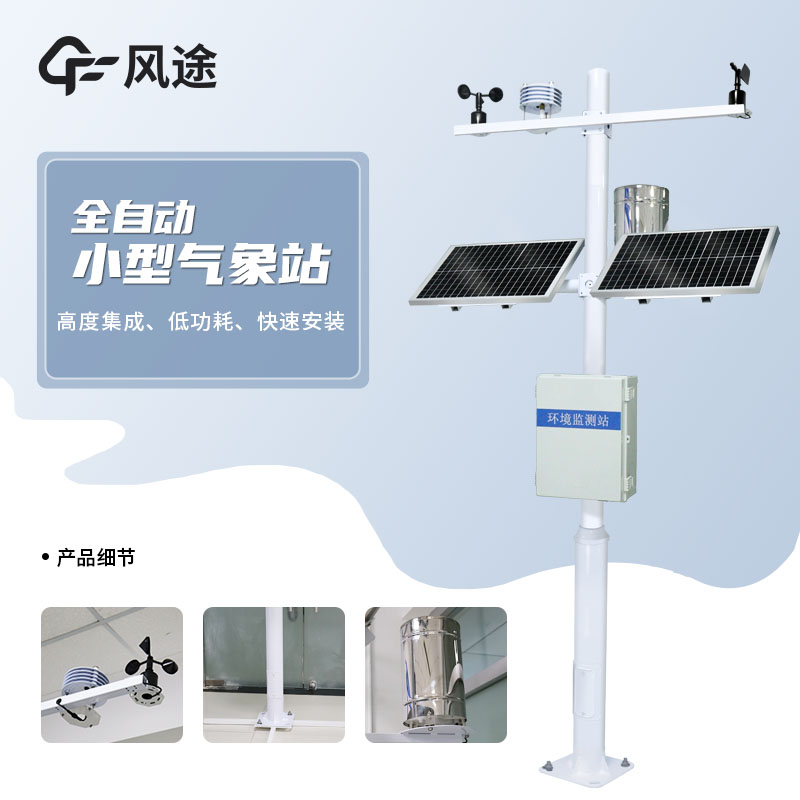Meteorological environment monitoring equipment supplier
Insist on doing high-precision customer favorite technology products
Many people who know about weather stations are no strangers to them. And there are some differences between the integrated weather station and the ordinary weather station, here are some detailed explanations about the differences between them.
Difference in sensors: ordinary weather station mainly monitors various weather elements, such as temperature, humidity, wind speed and rainfall. Each weather element is monitored by a separate sensor. However, an integrated weather station differs in this regard. It integrates these sensors for monitoring different weather elements together to form a single unit. This means that by simply installing this integrated unit, multiple weather elements can be effectively monitored at the same time.
An all-in-one weather station is an efficient weather data collection tool that automates the monitoring and storage of meteorological data in the environment. This system is based on electronic equipment and computer technology to enable real-time collection, processing and storage of meteorological data. In simple terms, an automatic weather station is an advanced observation system that combines multiple functions.
In addition, by connecting multiple all-in-one weather stations to a central station and transmitting data with the help of communication technology, we can build a larger-scale meteorological observation network. Such a network not only has a wider coverage, but also can provide more accurate and comprehensive meteorological data, thus better serving many fields such as weather forecasting and climate change research.
Compared with traditional artificial weather stations, the advantages of integrated automatic weather stations are as follows:
It is not affected by natural factors, such as snowfall and flooding, and can continuously monitor the ground temperature.
It can observe 24 hours uninterruptedly and provide more measurement data in real time.
Accurate observation results, avoiding human error.
Use is not restricted by human living conditions, only the performance of the instrument is considered.
Can provide data anytime and anywhere, widely used in emergency services. For the weather station, many people who understand it are not unfamiliar with it. And there are some differences between the integrated weather station and ordinary weather station, the following is some detailed explanation about the difference between them.
Difference in sensors: ordinary weather station mainly monitors various weather elements, such as temperature, humidity, wind speed and rainfall. Each weather element is monitored by a separate sensor. However, an integrated weather station differs in this regard. It integrates these sensors for monitoring different weather elements together to form a single unit. This means that by simply installing this integrated unit, multiple weather elements can be effectively monitored at the same time.
An all-in-one weather station is an efficient weather data collection tool that automates the monitoring and storage of meteorological data in the environment. This system is based on electronic equipment and computer technology to enable real-time collection, processing and storage of meteorological data. In simple terms, an automatic weather station is an advanced observation system that combines multiple functions.
In addition, by connecting multiple all-in-one weather stations to a central station and transmitting data with the help of communication technology, we can build a larger-scale meteorological observation network. Such a network not only has a wider coverage, but also can provide more accurate and comprehensive meteorological data, thus better serving many fields such as weather forecasting and climate change research.
Compared with traditional artificial weather stations, the advantages of integrated automatic weather stations are as follows:
It is not affected by natural factors, such as snowfall and flooding, and can continuously monitor the ground temperature.
It can observe 24 hours uninterruptedly and provide more measurement data in real time.
Accurate observation results, avoiding human error.
Use is not restricted by human living conditions, only the performance of the instrument is considered.
Data can be provided anytime and anywhere, widely used in emergency services.
